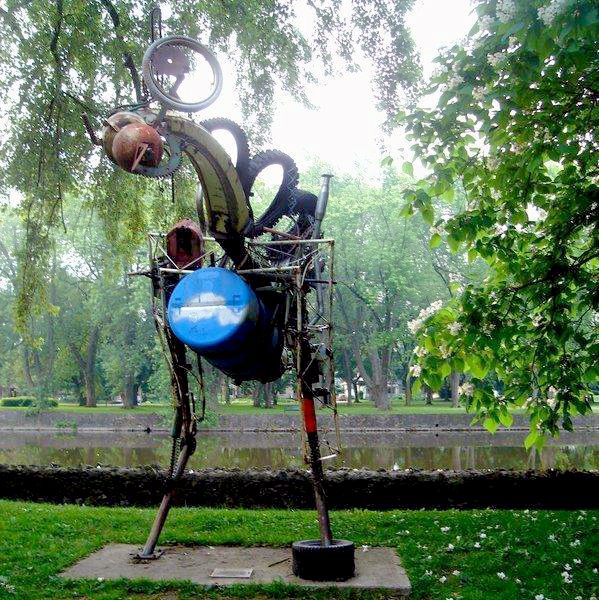Hidden in Guelph’s Royal City Park, Garbasaurus is a six-foot-tall sculpture made entirely from garbage, commemorating the Ontario Public Interest Research Group’s (OPIRG) Speed River Cleanup. Created in 1999 by artist Greg Elliott, the statue weighs 647 pounds—the same amount of trash removed from the Speed and Eramosa rivers during the cleanup’s first year in 1979.
Originally envisioned as a heron, the sculpture evolved into a dinosaur-like figure as Elliott incorporated discarded materials like tires, scrap metal, and hubcaps, reflecting the types of debris found during the cleanup. Then-Mayor Karen Farbridge recalled how the community quickly dubbed the sculpture Garbasaurus, embracing its whimsical, prehistoric look.
Though tucked away across from the Boathouse, Garbasaurus holds a special place in Royal City Park. The location is where volunteers gather each year for the river cleanup, making it a fitting tribute to the city’s ongoing environmental efforts.
Over the years, the sculpture has faced vandalism and natural wear, requiring multiple repairs, including a significant restoration in 2018 to reinforce its head and neck. Despite these challenges, Garbasaurus continues to stand as a testament to Guelph’s commitment to environmental activism, reminding passersby that even trash can be transformed into something inspiring.
Know Before You Go
Parking in the summer is available on the road through Royal City Park off Gordon Street immediately adjacent to the Garbasaurus. However, in the winter when the road through the park is closed, the closest convenient parking is across the street on Water Street
Visit in early June to see volunteers gather for the annual Speed River Cleanup.
N 43° 32.317 W 080° 14.564
43.538644, -80.242734

